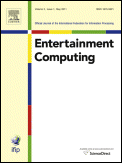
Entertainment Computing
Scope & Guideline
Unleashing Creativity Through Technology in Entertainment
Introduction
Aims and Scopes
- Interactive Entertainment Technologies:
Research on the development and application of interactive technologies, including virtual reality (VR), augmented reality (AR), and artificial intelligence (AI) in games and educational environments. - Gamification and Learning:
Exploration of gamification strategies in educational contexts, analyzing how game mechanics can enhance learning, engagement, and motivation among students. - User Experience and Engagement:
Studies focusing on user experience (UX) design principles in games and interactive media, investigating factors that influence player engagement and satisfaction. - Social and Psychological Impact of Games:
Examination of the social and psychological effects of gaming on various demographics, including mental health, social interaction, and cognitive development. - Multimodal and Cross-Disciplinary Approaches:
Integration of diverse methodologies from fields such as computer science, psychology, education, and design to create comprehensive frameworks for analyzing and improving entertainment experiences. - Cultural and Ethical Considerations in Gaming:
Research addressing cultural implications and ethical considerations surrounding gaming practices, including representation, accessibility, and the societal impact of digital entertainment.
Trending and Emerging
- AI and Machine Learning in Gaming:
Research on the application of AI and machine learning techniques to enhance gaming experiences, including adaptive difficulty levels, player behavior analysis, and NPC (non-player character) intelligence. - Virtual and Augmented Reality Applications:
An increase in studies focusing on the use of VR and AR technologies for immersive entertainment experiences, educational applications, and therapeutic interventions. - Health and Well-being through Gaming:
Emerging research on the benefits of gaming for mental health and well-being, including serious games designed for therapy and rehabilitation. - Interactive and Immersive Learning Environments:
Growing interest in the design of interactive learning environments that leverage gaming principles to enhance educational outcomes and student engagement. - Data-Driven Game Design:
Research utilizing big data analytics and user data to inform game design decisions, providing insights into player preferences and behavior patterns. - Social and Collaborative Gaming Experiences:
A trend towards exploring social interaction in gaming, including multiplayer experiences, community building, and the impact of gaming on social capital.
Declining or Waning
- Traditional Game Genres:
There has been a noticeable decrease in research focused on traditional game genres, as the journal shifts towards exploring innovative gaming experiences and the integration of new technologies. - Non-Interactive Media Studies:
Research on passive forms of entertainment, such as movies and television, is waning as the journal increasingly emphasizes interactive and participatory digital experiences. - Basic Game Design Principles:
Discussions centered on fundamental game design elements are becoming less frequent, replaced by more advanced explorations of complex systems and user interactions. - Single-Domain Focus Studies:
There is a reduction in studies that concentrate solely on one domain (e.g., only gaming or only education), as interdisciplinary research gains more traction and relevance. - Conventional Educational Methods:
Research on traditional educational methods without a gamified or interactive component is declining, as the journal increasingly advocates for innovative, technology-enhanced learning strategies.
Similar Journals

Journal on Multimodal User Interfaces
Pioneering Research in Multimodal User EngagementJournal on Multimodal User Interfaces, published by Springer, serves as a vital platform for scholarly exchange in the rapidly evolving fields of Human-Computer Interaction and Signal Processing. Established in 2008 and continuing through 2024, this journal maintains a high profile in academia, currently ranking in the Q2 category for both fields, indicating its significant contribution to ongoing research and practical applications. With its Scopus rankings placing it at #34 in Signal Processing and #49 in Human-Computer Interaction, it is recognized for publishing high-quality, impactful research. Although it is not an Open Access journal, the Journal on Multimodal User Interfaces remains accessible through institutional subscriptions. Researchers, professionals, and students will find the journal an essential resource for advancing knowledge and fostering collaboration in multimodal interaction technologies, which are crucial for enhancing user experience and developing intelligent systems.

Games for Health Journal
Unleashing the potential of games to enhance health.Games for Health Journal, published by MARY ANN LIEBERT, INC, is a pioneering journal at the intersection of gaming technology and health, dedicated to advancing the understanding of how digital games can influence health outcomes. Since its inception in 2012 and continuing through 2024, this highly regarded journal has established itself as an essential resource, achieving impressive rankings in a variety of categories—specifically, Q1 in both Health (Social Science) and Rehabilitation, and Q2 in Computer Science Applications and Public Health. Accessibility to cutting-edge research is facilitated through its current Scopus rank, which places it among the top tiers of its field, ensuring it is a vital tool for researchers, professionals, and students keen on exploring innovative approaches to health through gaming. Moreover, the absence of Open Access underscores the journal's commitment to rigorous peer-reviewed content, ensuring high-quality contributions from experts across disciplines. By bridging technology and health, Games for Health Journal stands at the forefront of shaping health-related gaming research, guiding future innovations and applications in the ever-evolving landscape of health solutions.
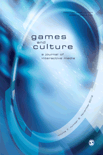
Games and Culture
Illuminating the Impact of Gaming on Cultural DynamicsGames and Culture is a premier interdisciplinary journal published by SAGE Publications Inc, focusing on the rich intersection of gaming, culture, and society. With an ISSN of 1555-4120 and an E-ISSN of 1555-4139, this esteemed journal facilitates critical discussions and innovative research contributions in fields ranging from anthropology and communication to applied psychology and cultural studies. Its exceptional standing is reflected in its various Scopus rankings, placing it in the 99th percentile for Cultural Studies and the 98th percentile for Anthropology, among others. Covering research from its inception in 2006 through 2024, Games and Culture is devoted to advancing the understanding of how games influence cultural expressions and vice versa, making it an invaluable resource for academics, practitioners, and students alike. While the journal is not open access, its comprehensive scope and high-impact findings ensure that it remains a crucial platform for scholarly exchange and discovery in understanding the increasingly significant role of gaming in contemporary culture.

International Journal of Science Education Part B-Communication and Public Engagement
Fostering dialogue to enhance public understanding of science.The International Journal of Science Education Part B: Communication and Public Engagement, published by Routledge Journals, Taylor & Francis Ltd, is a leading peer-reviewed journal dedicated to advancing research in the evolving fields of science communication and public engagement in education. With an ISSN of 2154-8455 and E-ISSN of 2154-8463, the journal has established itself as a key resource for researchers, educators, and practitioners interested in innovative communication strategies and engagement practices that enhance public understanding of science. It holds a commendable Q2 ranking in both the Communication and Education categories for 2023, reflecting its significant impact within academia—ranked 139th in Social Sciences Communication and 515th in Social Sciences Education based on Scopus metrics. Over its publication years from 2011 to 2024, the journal has provided a platform for scholars to share their insights and empirical findings, fostering dialogue and collaboration among professionals. Although it does not offer open access, it remains a vital source of knowledge, keeping stakeholders informed about the latest developments in science education and public outreach.
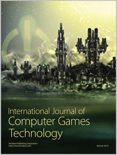
International Journal of Computer Games Technology
Unleashing Creativity in Computer Graphics and InteractionInternational Journal of Computer Games Technology, an esteemed publication from HINDAWI LTD, serves as a pivotal platform for scholars and practitioners in the realms of computer graphics, software, and human-computer interaction. Since its inception in 2008 as an open-access journal, it has committed to disseminating cutting-edge research and innovative practices within the gaming technology sector. The journal, identified by its ISSN 1687-7047 and E-ISSN 1687-7055, is based in the United States and boasts a converged publication timeline from 2009 to 2024. Recognized in the 2023 Category Quartiles for its contributions to notable fields, it ranks Q3 in Computer Graphics and Computer-Aided Design, Q4 in Human-Computer Interaction, and Q3 in Software. With its active presence in Scopus rankings, the journal holds commendable positions in multiple categories, indicating a growing impact on the academic community. This journal not only aims to advance knowledge but also encourages collaborative exploration and innovative solutions, making it an essential resource for researchers, professionals, and students dedicated to the evolution of gaming technology.
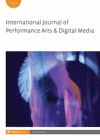
International Journal of Performance Arts and Digital Media
Advancing Knowledge in Performance and Digital InnovationInternational Journal of Performance Arts and Digital Media, published by Routledge Journals, Taylor & Francis Ltd, stands at the forefront of interdisciplinary research encompassing the dynamic fields of performance arts and digital media. With an ISSN of 1479-4713 and an E-ISSN of 2040-0934, this esteemed journal has been a vital platform since its inception in 2005, highlighting significant contributions to both Visual Arts and Communication. As evidenced by its impressive rankings—Q1 in Visual Arts and Performing Arts and Q2 in Communication for 2023—the journal's high-impact research caters to a diverse audience, making it invaluable for academics, practitioners, and students alike. Though it follows a traditional subscription model and does not currently offer open access options, the International Journal of Performance Arts and Digital Media remains committed to publishing cutting-edge scholarship and critical dialogues that explore the intricate relationships between artistic expression and digital technologies. Its rigorous peer-review process ensures that all published works meet the highest academic standards, fostering an environment of innovation and creativity within its community.

Journal of Gaming and Virtual Worlds
Shaping the Dialogue on Digital Realities.The Journal of Gaming and Virtual Worlds, published by INTELLECT LTD, serves as a pivotal platform for the exploration and dissemination of research in the rapidly evolving fields of gaming, virtual reality, and digital interactions. With an ISSN of 1757-191X and an E-ISSN of 1757-1928, this journal has established itself as a significant contributor to the landscape of computer graphics, computer science applications, and human-computer interaction within the UK and beyond. Operating from Bristol, England, the journal covers a spectrum of interdisciplinary topics that appeal to researchers, practitioners, and students alike, facilitating an enriched understanding of virtual technological advancements. The journal currently holds a Q3 ranking in both Computer Graphics and Computer-Aided Design and Computer Science Applications, as well as a Q4 ranking in Human-Computer Interaction, reflecting its commitment to high-quality scholarship. As it continues to publish pioneering research up to the year 2024, the Journal of Gaming and Virtual Worlds remains a valuable resource for those looking to stay at the forefront of the gaming and virtual environments domain.

Visual Informatics
Empowering Insights in Human-Computer InteractionVisual Informatics is a premier academic journal published by Elsevier, dedicated to advancing the fields of computer graphics, computer-aided design, and human-computer interaction. Since its launch in 2017, this Open Access journal has swiftly established itself as a leading platform for innovative research, reflected in its impressive impact factor and robust rankings in various Scopus categories. In 2023, it proudly holds positions in the top quartile (Q1) for Computer Graphics and Computer-Aided Design, Human-Computer Interaction, and Software, showcasing its influential contributions to these dynamic fields. Based in Amsterdam, Netherlands, Visual Informatics encourages the dissemination of high-quality, peer-reviewed articles that explore the intersection of visual technology and user experience, serving as an invaluable resource for researchers, professionals, and students seeking to stay at the forefront of these evolving disciplines.

International Journal of Gaming and Computer-Mediated Simulations
Charting the Future of Gaming and Simulation StudiesThe International Journal of Gaming and Computer-Mediated Simulations, published by IGI Global, serves as a pivotal platform for the dissemination of cutting-edge research in the realms of gaming and computer-mediated interactions. Established in 2009, it has consistently provided a scholarly space for innovative discussions around the implications, advancements, and societal impacts of gaming technologies and simulations. With an impressive impact factor as it continues to grow within the Q3 category of Computer Science Applications, this journal ranks #491 out of 817 in Scopus, highlighting its significance within an evolving discipline. Featuring contributions from both established and emerging scholars, the journal aims to bridge theoretical knowledge and practical application, thereby nourishing the academic pursuits of researchers, practitioners, and students alike. Access to the journal's rich content is critical for those striving to keep pace in this dynamic field, making it an essential resource for anyone invested in the future of gaming and computer-mediated environments.
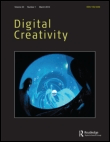
DIGITAL CREATIVITY
Innovating the Future of Creative Practices and Digital AestheticsDIGITAL CREATIVITY, published by Routledge Journals, Taylor & Francis Ltd, is a distinguished academic journal that serves as a vital platform for interdisciplinary research across the realms of Arts and Humanities, Computational Theory and Mathematics, Computer Graphics, and Human-Computer Interaction. Since its inception in 2005, this journal has aimed to explore the intersection of digital technologies and creative practices, making significant contributions to our understanding of digital aesthetics, interactive design, and the evolving nature of creativity in the digital age. With an impressive Q1 ranking in Arts and Humanities and notable standings in related computational fields, DIGITAL CREATIVITY appeals to a diverse audience of researchers, professionals, and students eager to engage with pioneering studies and innovative methodologies. While it presents valuable content primarily through subscription access, its credence in driving forward-thinking discussions is underscored by its ongoing relevance and commitment to advancing knowledge in a rapidly changing digital landscape. Join the conversation and contribute to shaping the future of digital creativity.